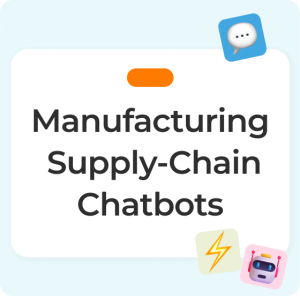80 Top Live Chat Response Examples to Boost Customer Engagement
A practical, copy ready library of live chat responses. Use these templates to greet, qualify, resolve, and convert, while keeping tone human and clear. Save your team time and lift customer satisfaction.
Table of contents
Introduction
Live chat is often a visitor’s first human touchpoint with your brand. It can keep a shopper on the page, guide a prospect to the right plan, and calm a frustrated user before they churn. A great response turns a quick question into a confident decision. A weak one creates friction and exits.
The goal of this guide is simple. Give your team 80 ready to use responses that sound natural, answer clearly, and move the conversation forward. Every section includes short context, use cases, and a set of templates you can paste directly into Oscar Chat. Personalize the brackets, send, and keep the dialogue flowing.
Why strong live chat responses matter
- Speed builds trust. A fast first reply shows you are present and attentive. Even a quick acknowledgment buys time to research.
- Consistency raises quality. Templates set a baseline for tone, accuracy, and compliance, which is vital when multiple agents share a queue.
- Personalization drives action. Using a customer’s name or order number grounds the chat in their reality and increases completion rates.
- Efficiency reduces cost. Crisp responses mean fewer back and forths, shorter handle time, and more chats resolved per agent.
Use the templates as a starting point, then adjust for your brand voice. Keep sentences tight, break long ideas into two lines, and avoid jargon. Plain language helps customers act faster.
A. Greetings and first impressions 5 templates
When to use: The first message sets tone and pace. Keep it warm, direct, and helpful. Offer a clear next step. If you recognize a returning visitor, reference what they viewed or asked before.
Use cases
- Ecommerce visitor on a product page.
- SaaS trial user opening chat from pricing.
- Returning customer recognized by cookie or account.
- 👋 Hi [Name], welcome to [Company]. How can I help you today?
- Good [morning/afternoon], thanks for visiting. Are you browsing or looking for something specific?
- Hey there. Before we dive in, may I know your name so I can tailor my help?
- Welcome back, [Name]. I see you were checking [product/plan]. Want a quick comparison?
- You have reached live support at [Company]. What can we solve for you right now?
B. Quick acknowledgment 5 templates
When to use: Acknowledge immediately, then investigate. This reduces perceived wait time and keeps the customer engaged while you check details or involve a teammate.
Pro tips
- Say you are checking, and set an expectation that it may take a minute.
- If it runs long, send a short update every 60 to 90 seconds.
- Got it, I am pulling up that info now.
- Thanks for the details. One moment while I check.
- I hear you. Let me confirm and get right back to you.
- Good question. Give me a quick second to find the most accurate answer.
- I am checking this for you, it will just take a moment.
C. Confirming understanding 5 templates
When to use: Reflect back what you heard before proposing a fix. This prevents wrong turns and shows you are listening.
Use cases
- Complex billing or policy questions.
- Technical issues with multiple possible causes.
- Requests that include several steps.
- Just to be sure I got this right, you are asking about [topic], correct?
- If I understand you correctly, you are looking for [X]. Did I get that right?
- Let me confirm, you want to know about [feature/policy], yes?
- So you are asking whether [scenario] applies to your case, right?
- Thanks for clarifying. That helps me give you the best answer.
D. Showing empathy 5 templates
When to use: Tension drops when customers feel understood. Pair empathy with a clear path forward. Avoid dramatic language. Stay practical and steady.
Pro tips
- Use calm verbs like notice, see, understand.
- Follow empathy with a next step within the same message.
- I understand this is frustrating. Let us fix it together.
- I would feel the same in your place. Here is what we can do now.
- That sounds stressful. I will work to get this sorted quickly.
- I know this is not ideal. Thanks for giving me a chance to resolve it.
- Thanks for your patience while we work through this.
E. Product and service questions 5 templates
When to use: Visitors often need a nudge to decide. Give concrete facts, remove doubt, and point to the next action.
Use cases
- Comparing plans or tiers.
- Checking stock or shipping windows.
- Clarifying features, limits, or compatibility.
- Yes, [Product] is in stock in [color/size]. Want me to show you how to order?
- Right now, [Product] ships within [timeframe]. Does that work for you?
- Our [Plan] includes [benefits]. Would you like a quick side by side comparison?
- Good choice. [Product] includes a [warranty/guarantee]. Want details?
- You can use [Product] for [use case]. Many customers in [industry] use it this way.
F. Handling price questions 5 templates
When to use: Price discussions need clarity and confidence. Explain what is included and invite action. If you offer discounts, be transparent about terms.
Pro tips
- Answer the price first, then add value context.
- Offer a next step like a link or a plan suggestion.
- The price of [Product] is [Amount]. If you order today, you get [discount or free shipping].
- We offer payment plans starting at [Amount per month]. Want me to share the options?
- It is a one time cost, no hidden fees.
- Yes, we review price match requests. Do you have a link I can check?
- Our price includes [benefit]. I can break it down if you like.
G. Handling delays or issues 5 templates
When to use: Own the delay, state the current status, and commit to the next update. Give specific dates when possible.
Use cases
- Shipping delays caused by carrier or weather.
- Backlog in onboarding or migration.
- Temporary outages or degraded performance.
- I am sorry for the delay. Your order should arrive by [date].
- We are seeing higher demand today, your spot is secured and I will update you by [time].
- Thanks for your patience. Here is the latest update, [insert update].
- We are on it. You will receive an email as soon as it ships.
- This is not the experience we want. Here is how we will make it right, [credit, replacement, or plan].
H. Offering alternatives 5 templates
When to use: If the exact request is not available, propose the next best step. Tie the alternative to the customer’s goal, not just your inventory.
Pro tips
- Explain why the alternative meets the same outcome.
- Offer a quick comparison in one or two lines.
- That option is sold out. Can I recommend [Alternative] that does [key benefit]?
- We do not offer [Feature] yet, however here is a workaround you can use today, [solution].
- While [Product A] is unavailable, [Product B] offers similar results for [use case].
- We do not have that service, however we offer [Alternative] that covers [need].
- Many customers who asked about [X] found [Y] useful instead. Want to see a quick overview?
I. Upselling and cross selling 5 templates
When to use: Offer adds that genuinely increase value. Keep it helpful. Tie the suggestion to what the customer already chose.
Use cases
- Accessory that protects or extends the product.
- Plan upgrade that unlocks a needed feature.
- Bundle that reduces shipping or total cost.
- Customers who bought [Product] also picked [Upsell]. Want me to add it?
- Since you chose [X], you can bundle it with [Y] at [discount]. Interested?
- Your plan works, and our [Premium Plan] adds [benefit] for [extra cost]. Would that help your team?
- You will get more from [Product] with [Accessory]. I can include it now.
- Many customers upgrade at checkout to receive free shipping and extended warranty. Want to do that?
J. Payment and billing 5 templates
When to use: Billing needs clarity and reassurance. State the path, link to a secure page, and confirm the outcome.
Pro tips
- Always label links as secure when they lead to checkout or invoices.
- Avoid acronyms unless common. Spell out how and where to pay.
- You can pay by card, PayPal, or bank transfer. Which do you prefer?
- Here is a secure payment link, [link].
- Payment successful. 🎉 Your order [#] is confirmed.
- It looks like the payment did not go through. Would you like to try again or use another method?
- We also offer installment payments. I can share the details.
K. Technical support 5 templates
When to use: Triage quickly, capture evidence, and propose a simple first step. Close the loop with a clear handoff if needed.
Use cases
- Browser based errors after a recent deploy.
- Account access or password issues.
- Feature not working as expected on specific device types.
- Let us try these steps, [step 1], [step 2]. Did that fix it?
- Can you tell me the exact error message you see?
- Thanks for the screenshot, that helps me troubleshoot.
- Please clear cache and restart the app. Do you still see the issue?
- I am escalating this to our technical team so you receive a full fix. I will update you by [time].
L. Refunds and returns 5 templates
When to use: Make the path simple and predictable. Share timelines, provide labels, and set expectations for the next communication.
Pro tips
- Offer a choice between refund and replacement when policy allows.
- Provide a link to the label or form inside the chat to reduce steps.
- I am sorry to hear that. I will start the refund now. You will see it within [X days].
- We can issue a refund or send a replacement. Which do you prefer?
- Your return is set. Here is your label, [link].
- Refund confirmed. Expect it in your account shortly.
- We would value another chance to help. May I suggest an alternative instead?
M. Complaints and negative feedback 5 templates
When to use: Acknowledge the problem without defensiveness. Thank the customer for raising it, then present a concrete action.
Use cases
- Shipping damage or wrong item delivered.
- Confusing pricing or communication.
- Service breakdown or missed deadline.
- Thank you for sharing your feedback. We will fix this.
- I hear your frustration. Let us work on a solution together.
- This does not meet our standards. I will make sure it is addressed.
- I am sorry this happened. Here is how we will make it right, [credit, replacement, or plan].
- Your experience matters. Thank you for the chance to improve.
N. Appointment and scheduling 5 templates
When to use: Reduce back and forth with a clear slot and a booking link. Confirm timezone and channel to avoid surprises.
Pro tips
- Offer two or three times instead of asking an open question.
- Confirm calendar invites are sent before ending the chat.
- Would you like me to schedule a call for you? What time works best?
- Our next available slot is [date and time]. Shall I book it?
- I have confirmed your appointment for [date and time]. You will receive a reminder email.
- Need to reschedule? No problem. Use this link to choose another time, [link].
- Would you like to meet by phone or video?
O. Collecting feedback 5 templates
When to use: Ask while the experience is fresh. Keep the request short. One question usually gets more responses than a long survey.
Use cases
- Post resolution CSAT inside the chat.
- Short survey link to identify feature gaps.
- Public review request for social proof.
- How did we do today? Please rate us from 1 to 5.
- Thanks for your time. What is one thing we could improve?
- Your feedback helps us improve. Care to share your thoughts?
- We would love to hear how this went. Was your issue fully resolved?
- If you have 30 seconds, would you leave a quick review here, [link]?
P. Closing the conversation 5 templates
When to use: End with clarity and warmth. Summarize the outcome or next step, then invite the customer to return.
Pro tips
- Offer to email a summary if the chat included several steps.
- Confirm contact details before closing the window.
- Glad I could help. If you need anything else, just open this chat again.
- Thanks for chatting today. Wishing you a great [day or week].
- I will send a summary of our chat to your email. Is [email] correct?
- I am ending the chat now, and you can reach us here 24,7.
- Take care, [Name], and thank you for choosing [Company].
How to adapt these templates
Templates save time and create consistency. The best results come when agents personalize them with small but meaningful details. Use the guide below to tune each message without slowing down the pace of chat.
Personalize with context
- Use the customer’s name and, when relevant, order number or plan.
- Reference the page they are on, such as a product or pricing page.
- Mention prior attempts, for example a previous ticket or call.
Keep it clear and short
- Prefer short sentences and action verbs.
- Break steps into a list instead of a block of text.
- Avoid internal jargon. Use customer language.
Balance automation and human touch
- Automate common greetings, acknowledgments, and links.
- Personalize reasons for a delay, the next step, and timing.
- Route edge cases to a human quickly to avoid loops.
Measure and improve
- Track first response time, resolution time, and CSAT.
- Review transcripts to spot phrases that cause confusion.
- Update templates monthly to reflect new pricing or policies.
Conclusion
Great chat replies do not happen by accident. They come from simple language, quick acknowledgment, clear choices, and steady follow through. The 80 responses above give your team a head start. Use them as a base, then layer in your brand voice and product specifics.
Oscar Chat helps teams move faster with saved replies, routing, and always on engagement. Automate the common flows, then let your agents add the human touch that customers remember. Consistency scales trust, and trust grows revenue.
FAQ
Q: How do I make live chat responses sound human?
A: Personalize with names, context, and previous actions. Keep sentences short. Avoid copy paste blocks that ignore what the user just said.
Q: How fast should agents reply in live chat?
A: Aim for an initial reply in under 30 seconds, then give progress updates every minute if research is needed.
Q: Can I automate these responses?
A: Yes. Use Oscar Chat to store greetings, acknowledgments, and links, then route complex cases to a human.
Q: Should I use emojis?
A: Use them sparingly. A single emoji can add warmth. Too many distract from the message.
Q: Do these templates work across industries?
A: Yes. Adapt the examples with the product name, plan names, and common use cases in your field.






